Pricing Guides & Dictionary of Makers Marks for Antiques & Collectibles

The GEORGIAN STYLE in Antique and Collectible
Join the most updated and complete collectibles research online - Learn more...
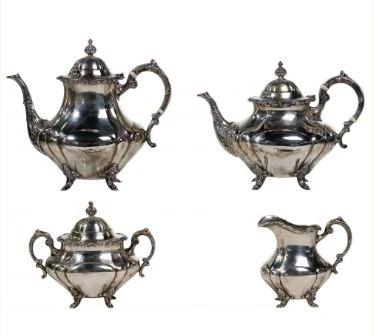 The Georgian era spanned from 1714 to 1830 and was a time of cultural, social, and economic growth in Great Britain. The Georgian style, named after the monarchs who reigned during this period, was characterized by a classic, elegant, and refined aesthetic that has stood the test of time. This style can be seen in various art forms, including architecture, furniture, silverware, and collectibles.
The Georgian era spanned from 1714 to 1830 and was a time of cultural, social, and economic growth in Great Britain. The Georgian style, named after the monarchs who reigned during this period, was characterized by a classic, elegant, and refined aesthetic that has stood the test of time. This style can be seen in various art forms, including architecture, furniture, silverware, and collectibles.
The Georgian Style in Furniture
One of the most prominent features of Georgian furniture is its symmetry. Georgian furniture makers were inspired by classical architecture and sought to create furniture that mirrored the balance and proportion of ancient buildings. Georgian furniture is also known for its use of high-quality materials, such as mahogany, oak, and walnut. The style favored straight, clean lines and minimal ornamentation, with the occasional use of delicate carving or inlaid decoration.
Georgian furniture is often categorized into three main periods: early Georgian (1714-1760), mid-Georgian (1760-1800), and late Georgian (1800-1830). Early Georgian furniture is typically characterized by its elaborate carving and ornamentation, while mid-Georgian furniture became more refined, with less emphasis on decoration and more focus on clean lines and simplicity. Late Georgian furniture was influenced by the Regency style, which emphasized exotic woods, bold colors, and neoclassical motifs.
Georgian furniture remains highly sought after by collectors and antique enthusiasts. Pieces from the early Georgian period are especially rare and valuable, with some fetching millions of dollars at auction. Georgian furniture is also a popular choice for interior design, as it adds a touch of timeless elegance to any room.
The Georgian Style in Silverware
Georgian silverware is known for its high quality and intricate decoration. Silver was a popular material during the Georgian era, and skilled silversmiths crafted beautiful pieces that were both functional and ornamental. Georgian silverware was often used for dining and entertaining, and the style reflected the opulence and refinement of the era.
One of the most distinctive features of Georgian silverware is its use of floral and foliate motifs. The style favored naturalistic designs that incorporated delicate leaves, flowers, and vines. Georgian silverware also often featured intricate engraving and embossing, adding texture and depth to the pieces.
Georgian silverware remains highly collectible, with some pieces fetching thousands of dollars at auction. The style is also popular among collectors of antique dining sets, as Georgian silverware adds a touch of elegance and sophistication to any table setting. A notable example of Georgian silverware includes a George III silver tea caddy by Paul Storr, which sold for $180,000 at auction in 2015 and a pair of George II silver candlesticks by Samuel Wood, which sold for $250,000 at auction in 2017.
The Georgian Style in Collectibles
Georgian collectibles encompass a wide range of objects, from porcelain figurines to snuff boxes to writing instruments. Like other Georgian art forms, Georgian collectibles were characterized by their elegance, refinement, and attention to detail.
One of the most popular Georgian collectibles is the snuff box. Snuff, a form of powdered tobacco, was popular during the Georgian era, and snuff boxes were a fashionable accessory. Georgian snuff boxes were often crafted from precious metals or fine porcelain, and featured intricate decoration and engravings.
Another popular Georgian collectible is writing instruments. Georgian pens and inkwells were often crafted from precious metals and featured elaborate designs and engravings. They were a symbol of status and were often given as gifts between aristocrats.
Georgian porcelain figurines are also highly collectible. These delicate and intricately detailed figurines were produced by renowned porcelain manufacturers such as Meissen and Wedgwood. They often depicted scenes from daily life or allegorical figures, and were highly prized for their craftsmanship and beauty.
Other popular Georgian collectibles include snuff spoons, perfume bottles, and miniature portraits. These objects were often crafted from precious materials such as gold, silver, and enamel, and were highly sought after by collectors and connoisseurs of the time.
Today, Georgian collectibles remain highly coveted by collectors and antique enthusiasts. They are a testament to the enduring appeal of the Georgian style, and serve as a reminder of the elegance and refinement of a bygone era.
Conclusion
The Georgian style is a timeless classic that has influenced art and design for centuries. Its emphasis on symmetry, balance, and elegance has made it a popular choice for collectors and interior designers alike. Whether it's a piece of Georgian furniture, a silver snuff box, or a porcelain figurine, Georgian collectibles are a testament to the enduring appeal of this elegant and refined style.
Unlock the true value of your collection with our comprehensive research guides from identifying makers' marks to appraising all kinds of antiques and collectibles, including items featured in this article.
Our up-to-date information will give you an accurate understanding of your items' worth. Don't miss out on this valuable resource - visit our research tools today!
In addition to some examples shown below on this page, you can also search our price guide for your own treasures.
Examples of related items from our Price Guides
-
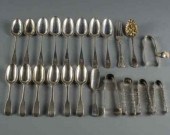 GROUP OF GEORGIAN SILVER FLATWAREA group
[more like this]
GROUP OF GEORGIAN SILVER FLATWAREA group
[more like this]
-
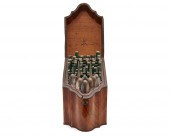 GEORGIAN MAHOGANY INLAID CUTLERY BOX, TO
[more like this]
GEORGIAN MAHOGANY INLAID CUTLERY BOX, TO
[more like this]
-
 SILVER. ENGLISH SILVER HOLLOWWARE GROUPI
[more like this]
SILVER. ENGLISH SILVER HOLLOWWARE GROUPI
[more like this]
-
 SILVER. ASSORTED ENGLISH SILVER FLATWARE
[more like this]
SILVER. ASSORTED ENGLISH SILVER FLATWARE
[more like this]
-
 Fourteen Pieces of Sterling Silver Hollo
[more like this]
Fourteen Pieces of Sterling Silver Hollo
[more like this]
-
 ANTIQUE GEORGIAN DIAMOND EMERALD BROOCH
[more like this]
ANTIQUE GEORGIAN DIAMOND EMERALD BROOCH
[more like this]
-
 SEVEN PAIRS OF ENGLISH BRASS CANDLESTICK
[more like this]
SEVEN PAIRS OF ENGLISH BRASS CANDLESTICK
[more like this]
-
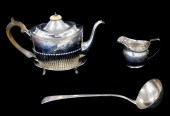 STERLING: PETER & ANNE BATEMAN TEAPOT AN
[more like this]
STERLING: PETER & ANNE BATEMAN TEAPOT AN
[more like this]
-
 JEWELRY. (2) MOURNING BROOCHES INC. GEOR
[more like this]
JEWELRY. (2) MOURNING BROOCHES INC. GEOR
[more like this]
-
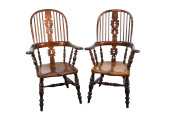 TWO ENGLISH GEORGIAN 19TH CENTURY GEORGI
[more like this]
TWO ENGLISH GEORGIAN 19TH CENTURY GEORGI
[more like this]
-
 Good Six-Piece Collection of American St
[more like this]
Good Six-Piece Collection of American St
[more like this]
-
 Eleven-Piece Collection of American Ster
[more like this]
Eleven-Piece Collection of American Ster
[more like this]
There are many more auction results available to our members...





